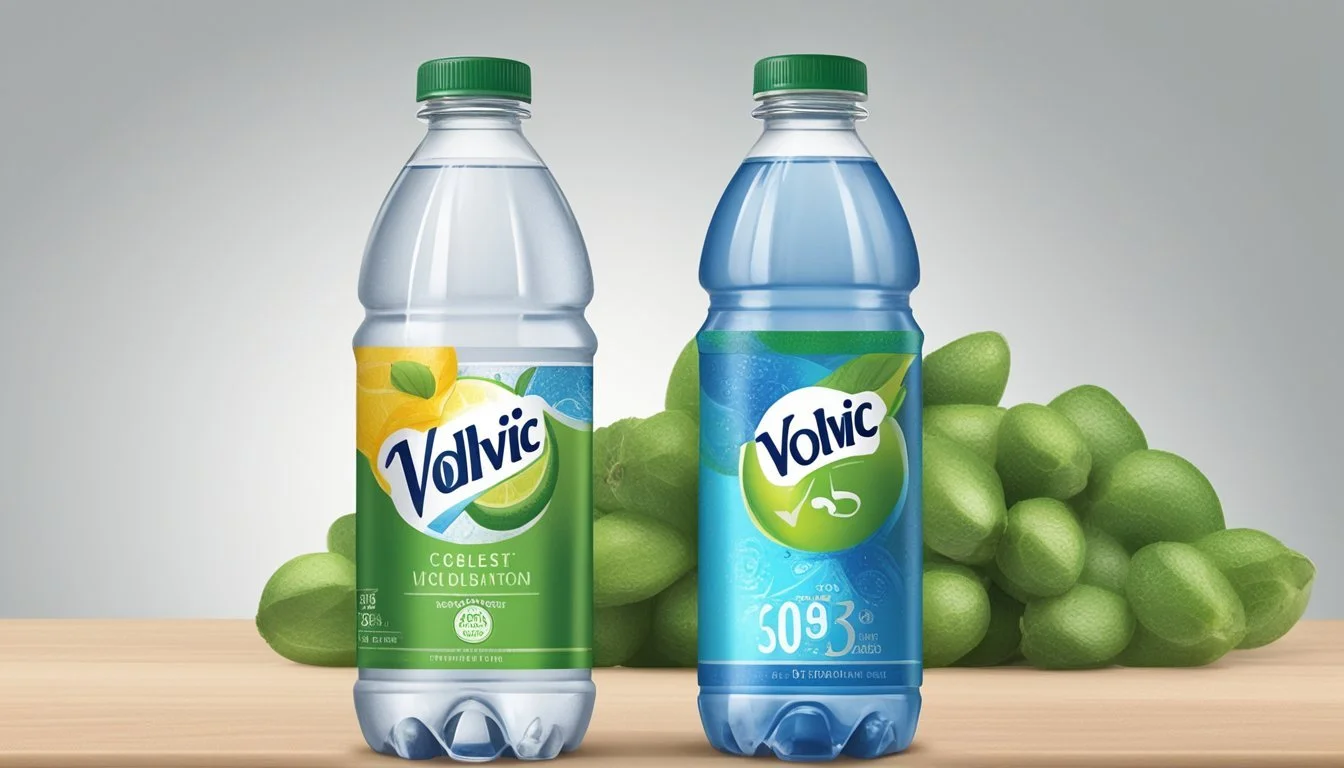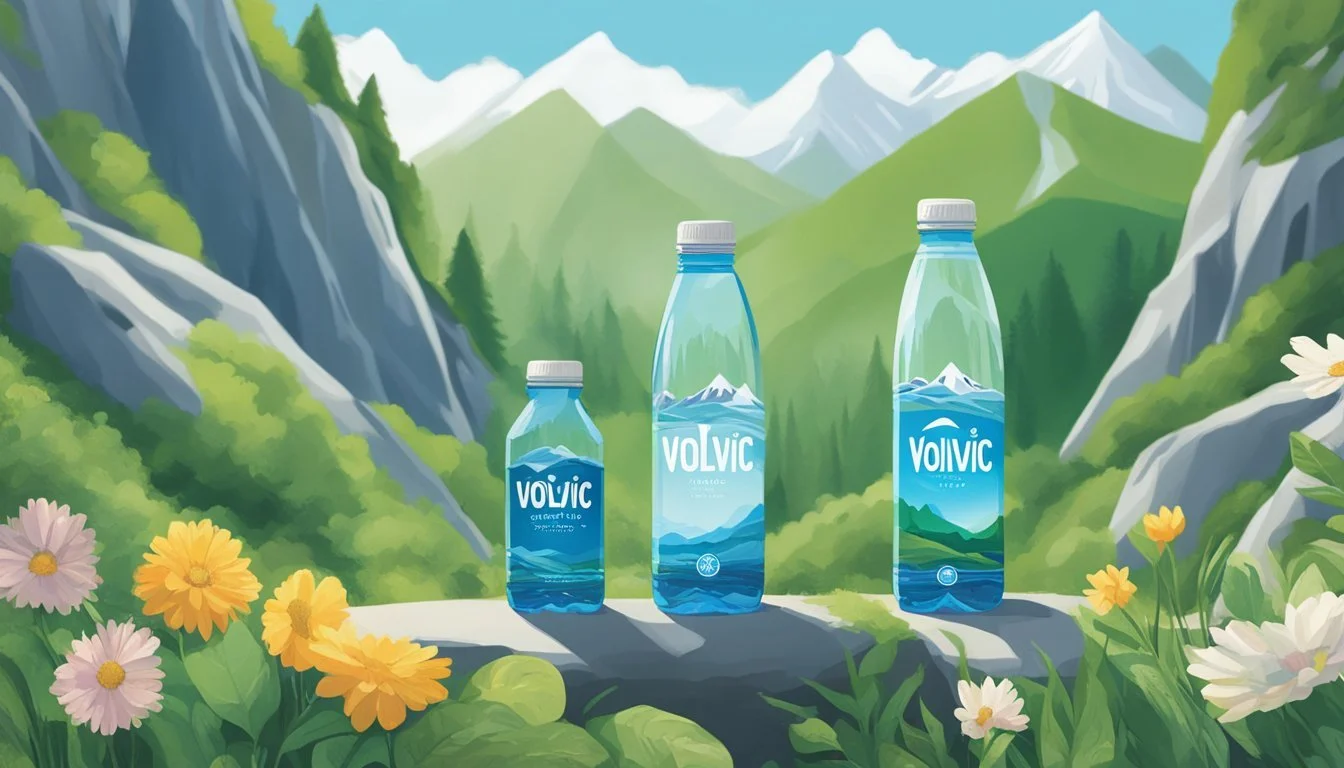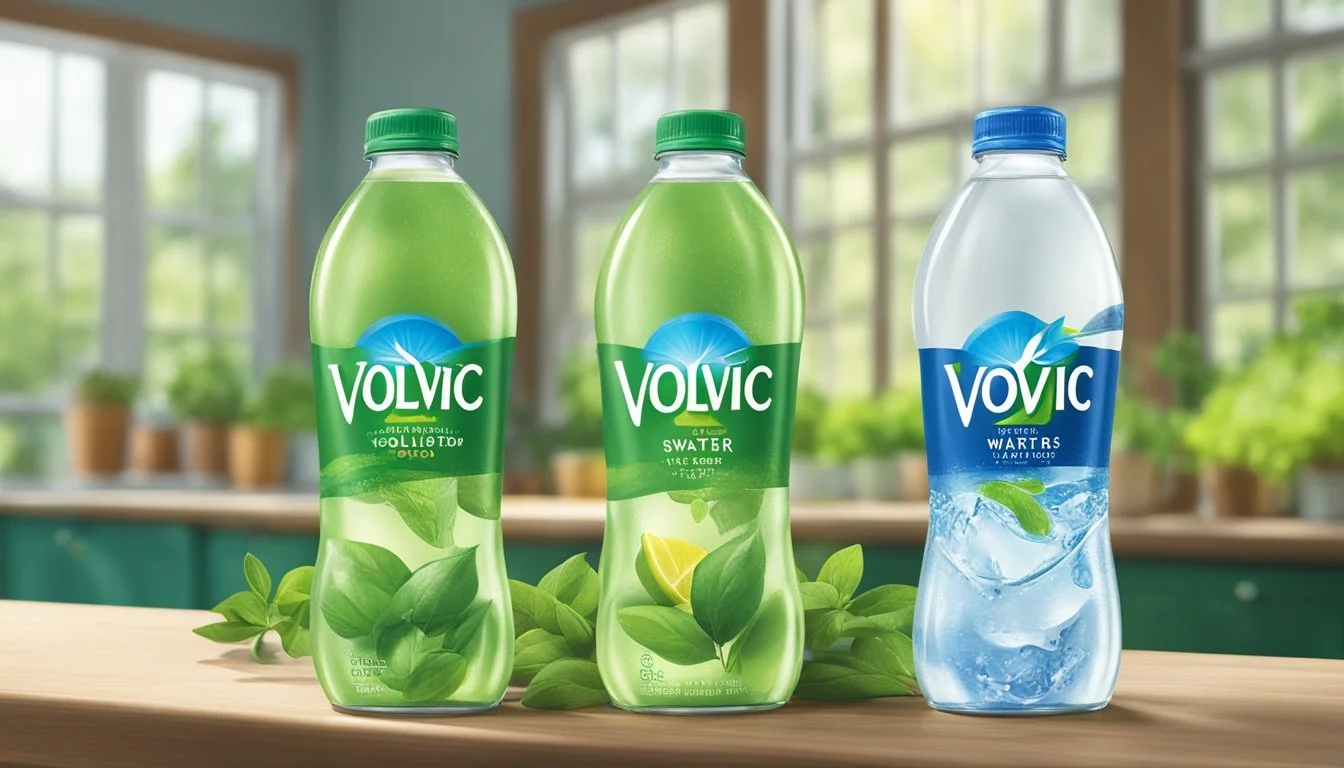Volvic vs. Whole Foods 365
Comparing Quality and Taste
When it comes to choosing the best bottled water, two brands often come up in conversation: Volvic and Whole Foods 365. Each offers unique characteristics that appeal to different preferences. Volvic, sourced from volcanic regions, provides a rich and refreshing taste, making it one of the top picks among bottled water enthusiasts.
Whole Foods 365, while technically a spring water, has a flavor profile that can sometimes feel less refined compared to its competitors. It presents a more economic option, which is attractive at only 69 cents per bottle. However, it's worth noting that some find its taste slightly sour with a dry aftertaste.
If you're looking for a more consistent and enjoyable drinking experience, Volvic tends to be the superior choice. Despite the higher price point, its natural filtration process and refreshing taste make it stand out.
Understanding Bottled Water
Bottled water has become an essential part of daily life, serving a variety of purposes from basic hydration to offering specific health benefits. This section covers the historical context, the different types available, and the regulations governing its safety.
History and Evolution of Bottled Water
Bottled water dates back centuries, with records of its use in Ancient Rome. The commercial market began to develop in the late 19th century.
Early brands like Evian became popular for their mineral content. The 1970s saw a significant shift as plastic bottles introduced convenience. By the late 20th and early 21st centuries, the market exploded with different types like spring water, purified water, and alkaline water.
Types of Bottled Water
Bottled water comes in various types, each with distinct characteristics.
Spring Water: Sourced from natural springs and often contains minerals.
Purified Water: Treated to remove impurities.
Mineral Water: Contains natural minerals.
Alkaline Water: Has higher pH levels.
Carbonated Water: Infused with carbon dioxide gas for fizziness.
These types cater to different consumer needs, from daily hydration to specific health benefits.
Bottled Water Regulations
In the United States, bottled water is regulated by the FDA, while tap water is under the EPA.
The FDA ensures bottled water meets specific safety standards. This involves regular testing for contaminants. Additionally, the Environmental Protection Agency (EPA) plays an indirect role by setting regulations for public water systems that may influence the source water for some bottled brands. These regulations aim to ensure safety and consumer confidence in drinking water products.
Brand Profiles
Volvic and Whole Foods 365 offer unique features that cater to different consumer preferences for bottled water. The following sections explore the details of these brands to help you make an informed choice.
Volvic: Brand Overview
Volvic is a well-known brand in the bottled water market. Sourced from the Auvergne volcanic region in France, Volvic's natural spring water is renowned for its clean, crisp taste. The water travels through six layers of volcanic rock, which naturally filters and enriches it with minerals such as calcium and magnesium.
Volvic is committed to sustainability, utilizing eco-friendly packaging and supporting various environmental initiatives. Consumers appreciate its consistent quality and the brand’s transparency about its sourcing and production processes.
Whole Foods 365: Brand Overview
Whole Foods 365 is the private label brand from Whole Foods Market. This brand offers a range of bottled waters, including natural spring water and purified water. The water is sourced from protected springs and undergoes stringent quality control processes to ensure purity and taste.
Whole Foods 365 products are known for their affordability, making them accessible to a broad audience. The brand emphasizes sustainable practices, including the use of recyclable packaging and supporting community-focused environmental projects.
These brief insights provide a clearer picture of what each brand offers, helping consumers decide which aligns with their preferences for bottled water.
Water Quality and Safety
Comparing the quality and safety of Volvic and Whole Foods 365 bottled waters involves examining sources, filtration processes, contaminants, and adherence to health standards. Ensuring safe drinking water depends on each brand's rigorous testing and voluntary guidelines.
Source and Filtration Processes
Volvic sources its water from the Clairvic Spring in France's Auvergne region. The naturally volcanic region filters the water through six layers of volcanic rock, contributing to its mineral content and purity. This extensive natural filtration process is supplemented by additional filtration to ensure clarity and quality.
Whole Foods 365, on the other hand, sources its spring water from various locations, including some in Massachusetts. The specific filtration techniques can vary by source but generally include standard filtration methods such as carbon filtration and reverse osmosis. These methods aim to remove impurities and enhance water quality.
Testing for Contaminants
Both brands conduct regular testing to detect potential contaminants. Volvic's quality assurance involves checking for lead, arsenic, and heavy metals. They also monitor pH levels, ensuring the water maintains a slightly acidic to neutral profile (pH 7), suitable for consumption.
Consumer Reports highlighted that Whole Foods 365 spring water exhibited PFAS chemical levels in certain batches. These chemicals, sometimes found in bottled waters, raise health concerns when present in significant amounts. Whole Foods conducts extensive testing to minimize PFAS levels, but isolated incidents indicate the need for continuous vigilance.
Health and Safety Standards
Volvic adheres to strict European health and safety standards. These standards surpass many international regulations, ensuring that total PFAS levels and other potential contaminants remain well below hazardous levels. Their adherence to strong regulatory frameworks guarantees a high degree of safety.
Whole Foods 365 follows both state and federal guidelines for safe drinking water in the United States. This involves compliance with standards set by the Environmental Protection Agency (EPA) and various state health departments. Periodic testing and adherence to voluntary guidance ensure that their bottled waters meet stringent safety criteria, though occasional issues may prompt additional scrutiny.
Both brands prioritize consumer health through rigorous quality checks and adherence to health standards. Understanding their approaches to water quality and safety helps consumers make informed choices about their bottled water preferences.
Nutritional Comparison
Volvic and Whole Foods 365 bottled waters offer distinct mineral content and pH levels. Understanding these aspects can help consumers make informed decisions based on their hydration and health goals.
Mineral Content and Health Benefits
Volvic water is known for its mineral-rich profile, which includes bicarbonates that help maintain the body's pH balance and aid in digestion. This water also contains calcium, magnesium, and potassium, essential electrolytes that support muscle function and bone health.
Whole Foods 365 spring water generally has a less complex mineral composition. While it includes fundamental minerals like sodium and calcium, its concentration is lower compared to Volvic. Despite this, it still offers basic hydration benefits suitable for daily consumption.
pH and Acidity Levels
Volvic’s pH level typically ranges around 7 to 8, making it slightly alkaline. Alkaline waters are believed to help neutralize acids in the body and provide a refreshing taste. This aspect can be particularly appealing for those looking for water that supports balanced body levels.
Whole Foods 365 water often has a more neutral pH close to 7. Being neutral means it does not significantly alter the body's pH but provides clean and crisp hydration without noticeable acidity or alkalinity. This might be preferable for those who do not want any specific pH-related benefits.
These factors can guide consumers in selecting the water that best fits their nutritional and lifestyle needs.
Taste Profile and Palate
Understanding the taste profile and palate of Volvic and Whole Foods 365 requires examining the role of pH in taste and insights from water sommeliers.
The Role of pH in Taste
The pH level of water affects its taste. Volvic has a pH level of about 7, which is neutral. This neutrality ensures that the water tastes clean and smooth without any noticeable sharpness.
Whole Foods 365, being slightly acidic with a pH below 7, presents a subtly different taste. This slight acidity can give it a mild tang, making it distinguishably crisp.
A pH closer to 7 often indicates purer taste, free from bitterness or sourness. Still, individual preferences can lean toward either end of the pH spectrum, influenced by what complements one's palate.
Water Sommelier Insights
Water sommeliers often describe Volvic as having a refreshing but gentle taste, attributed to its volcanic origin. The water's mineral content remains balanced, imparting a smooth sensation without overpowering any specific flavor notes.
Whole Foods 365, on the other hand, has a more perceptible aftertaste due to its electrolyte-enhancement. Sommeliers note a slight tang, possibly from the added minerals. This taste can appeal to those looking for a more pronounced flavor.
In conclusion, the expertise of water sommeliers highlights that the choice between Volvic and Whole Foods 365 ultimately boils down to one's preference for either a subtle, balanced taste or a crisp, tangy experience.
Environmental Considerations and Sustainability
When evaluating Volvic and Whole Foods 365 bottled waters, it's essential to consider their environmental impact and sustainability efforts. Both brands adopt different approaches regarding packaging and water sourcing.
Bottled Water and Plastic Waste
Plastic waste from bottled water is a significant environmental concern. Many water brands, including Whole Foods 365, use PET plastic bottles, which can contribute to pollution if not recycled properly. Although PET bottles are recyclable, the rate of plastic recycling remains low, leading to a substantial amount of plastic waste ending up in landfills and oceans.
Conversely, Volvic utilizes plastic bottles too but has made some strides toward sustainability by incorporating recycled plastic in their packaging. However, the production and disposal of plastic still pose environmental risks. Reducing reliance on plastic bottles and enhancing recycling processes are critical steps to lessen the environmental footprint of bottled water.
Alternatives to Plastic Bottles
To address plastic waste, some brands are exploring alternatives to traditional plastic bottles. Boxed water, for instance, has emerged as a more sustainable option, with packaging primarily made from renewable resources and being more easily recyclable compared to plastic. This approach significantly reduces the environmental impact associated with plastic waste.
Volvic primarily focuses on its natural water sourcing and the use of recycled plastic. While commendable, this does not entirely mitigate the issues related to plastic pollution. Meanwhile, alternatives such as boxed water and glass bottles are gaining traction due to their lower environmental footprints. Consumers seeking sustainable options might prefer these alternatives over traditional PET plastic bottles.
Market Trends and Consumer Preferences
In recent years, bottled water has gained widespread popularity among consumers seeking convenience and perceived higher quality. This section explores current market trends and changes in consumer preferences, showcasing how Volvic and Whole Foods 365 fit into the competitive landscape.
Sales and Popularity
The growing popularity of bottled water is evident in rising sales figures. Grocery stores report consistent demand for premium brands like Volvic. Known for its slightly alkaline pH, Volvic appeals to health-conscious consumers.
Whole Foods 365 water also experiences robust sales, driven by the retailer's loyal customer base. The 365 brand emphasizes transparency and quality, aligning with Whole Foods' reputation for offering organic and natural products. This brand resonates well with consumers looking for reliable and ethically sourced options.
Market research shows a strong preference for convenience, which drives bottled water sales. Busy lifestyles and concerns over tap water safety boost this trend. Consumer Reports Magazine highlights bottled water's perception as a safer choice, influencing consumer purchases.
Shifts in Consumer Demand
Consumer demand is shifting towards products with added health benefits and environmental considerations. Volvic's naturally filtered process and balanced mineral content cater to these preferences. Health advocates favor its slightly alkaline pH for optimal hydration.
Whole Foods 365 responds to the demand for sustainable practices by prioritizing water conservation and ethical sourcing. This appeals to environmentally conscious consumers.
The trend towards cleaner labels and fewer additives is evident in market choices. Consumers prefer bottled water brands that provide clarity on ingredients and sourcing. Consumer Reports found that transparency and minimized chemical content are pivotal in influencing purchasing decisions.
Industry Insights and Expert Opinions
This section highlights the standards set by industry bodies and critical evaluations conducted by investigative reporters, helping consumers make informed choices about Volvic and Whole Foods 365 bottled waters.
International Bottled Water Association Standards
The International Bottled Water Association (IBWA) sets rigorous standards for bottled water quality. These standards cover everything from source protection, water treatment, and disinfection to quality control and packaging requirements.
Volvic and Whole Foods 365 adhere to these IBWA standards, ensuring that their water is safe and high-quality. Compliance with such standards is paramount for public health, as it minimizes the risk of contaminants. Both brands implement state-of-the-art purification processes, ensuring the delivery of clean, safe drinking water to consumers.
Investigative Reports on Bottled Water
Investigative journalists play a crucial role in uncovering the truths about bottled water quality. Reports from reputable sources like Consumer Reports have revealed critical insights into the presence of pollutants, including toxic PFAS chemicals, in some bottled water brands.
Volvic and Whole Foods 365 have been under scrutiny, with tests generally showing favorable results regarding safety and quality. Such reports help consumers trust that these brands meet health standards, giving them confidence in their purchasing decisions. Identifying any potentially harmful substances ensures that consumers are making safer choices for their health.
Conclusion
When comparing Volvic to Whole Foods 365 bottled water, several differences become evident.
Volvic is known for its natural mineral content sourced from volcanic French springs. It offers a clean taste that many find refreshing.
Whole Foods 365, on the other hand, provides an electrolyte-enhanced option. This can be particularly appealing for those seeking added hydration benefits.
Consumers often mention the crisp, slightly sweet flavor of Whole Foods 365. It offers an excellent balance of minerals, making it suitable for various dietary needs.
Pricing varies between the two. Volvic tends to be more premium-priced, reflecting its natural origin and mineral content. Whole Foods 365 is often more accessible in terms of cost.
In terms of environmental impact, both brands use plastic bottles, but Whole Foods 365 often highlights its efforts towards more sustainable packaging.
Overall, the choice between Volvic and Whole Foods 365 bottled water depends largely on personal preference, desired mineral content, and budget considerations.
More About Volvic
Mountain Valley Spring Water vs Volvic: Which Bottled Water is Better?
Volvic vs Kirkland Signature: Which Bottled Water is Better?
Volvic vs Richard's Rainwater: Which Bottled Water is Better?
Volvic vs Whole Foods Italian Still Mineral water: Which Bottled Water is Better?
More About Whole Foods 365
Acqua Pana vs Whole Foods 365: Which Bottled Water is Better?
Alkaline88 vs Whole Foods 365: Which Bottled Water is Better?
Antipodes vs Whole Foods 365: Which Bottled Water is Better?
Aqua Carpatica vs Whole Foods 365: Which Bottled Water is Better?
Arrowhead vs Whole Foods 365: Which Bottled Water is Better?
Big Chill vs Whole Foods 365: Which Bottled Water is Better?
Boxed Water vs Whole Foods 365: Which Bottled Water is Better?
Cascade Mountain vs Whole Foods 365: Which Bottled Water is Better?
Castle Rock vs Whole Foods 365: Which Bottled Water is Better?
Core Hydration vs Whole Foods 365: Which Bottled Water is Better?
Crystal Geyser vs Whole Foods 365: Which Bottled Water is Better?
Deer Park vs Whole Foods 365: Which Bottled Water is Better?
Hawaii Volcanic vs Whole Foods 365: Which Bottled Water is Better?
Hawaiian Springs vs Whole Foods 365: Which Bottled Water is Better?
Ice Mountain vs Whole Foods 365: Which Bottled Water is Better?
Icelandic Glacial vs Whole Foods 365: Which Bottled Water is Better?
Just Water vs Whole Foods 365: Which Bottled Water is Better?
Liquid Death vs Whole Foods 365: Which Bottled Water is Better?
Mountain Valley Spring Water vs Whole Foods 365: Which Bottled Water is Better?
Nestle Pure Life vs Whole Foods 365: Which Bottled Water is Better?
Open Water vs Whole Foods 365: Which Bottled Water is Better?
Poland Spring vs Whole Foods 365: Which Bottled Water is Better?
Pure Life vs Whole Foods 365: Which Bottled Water is Better?
Purely Sedona vs Whole Foods 365: Which Bottled Water is Better?
Richard's Rainwater vs Whole Foods 365: Which Bottled Water is Better?
San Pellegrino vs Whole Foods 365: Which Bottled Water is Better?
Simple Truth vs Whole Foods 365: Which Bottled Water is Better?
Smartwater vs Whole Foods 365: Which Bottled Water is Better?
Solan de Cabras vs Whole Foods 365: Which Bottled Water is Better?
Talking Rain AQA vs Whole Foods 365: Which Bottled Water is Better?
Topo Chico vs Whole Foods 365: Which Bottled Water is Better?
Weird Water vs Whole Foods 365: Which Bottled Water is Better?
Whole Foods 365 vs 1907water: Which Bottled Water is Better?
Whole Foods 365 vs BodyArmor: Which Bottled Water is Better?
Whole Foods 365 vs CBD Living: Which Bottled Water is Better?
Whole Foods 365 vs Crystal Lake: Which Bottled Water is Better?
Whole Foods 365 vs Essence pH10: Which Bottled Water is Better?
Whole Foods 365 vs Kirkland Signature: Which Bottled Water is Better?
Whole Foods 365 vs Proud Source: Which Bottled Water is Better?
Whole Foods Italian Still Mineral water vs Whole Foods 365: Which Bottled Water is Better?
Zephyrhills vs Whole Foods 365: Which Bottled Water is Better?







